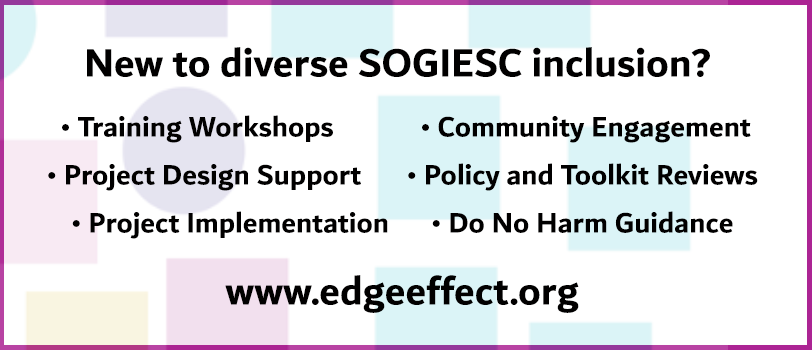While persecution on account of sexual orientation or gender identity is grounds for a refugee claim, for refugees with diverse SOGIESC, refugee status determination (RSD) and the procedures that surround it frequently fall short of the spirit of protection enshrined in the 1951 Refugee Convention and its 1967 Protocol. Lengthy interview waiting times, inconsistent implementation of RSD standards (particularly credibility assessments), and a lack of sensitivity to LGBTIQ+ applicants are generally compounded by glaring protection gaps in countries of asylum. Dynamics of power that exist between institutions and individuals need to be addressed in order to create fairer outcomes for displaced sexual and gender minority groups. Done correctly, RSD can serve as an empowering storytelling tool that illuminates the diversity of experiences alive within refugee communities and informs the international humanitarian community’s broader understanding of sexual and gender identities.
Let’s begin with a couple of scenarios.
I’m a white woman, in my late twenties, living in an African country where I conduct RSD interviews for UNHCR. There’s an immense backlog of interviews, because UNHCR doesn’t have the staff capacity to process the thousands of refugee claims it received this year. Today I’m interviewing four people in a row. Each interview should last between one and two hours. The final interview is with a young 18-year-old woman who fled one year ago from her home country, where she was being persecuted because she’s a lesbian. She’s from a rural village, has little education, and only speaks a local language. An interpreter from the same place as our applicant supports the interview. Our applicant is uncomfortable with this, because she’s suffered violence from individuals in the same community, but she doesn’t want to complain and potentially delay the interview any longer. Note that there are no words in the applicant’s language that positively identify her sexuality. Instead of an equivalent to lesbian, the interpreter is using something that translates closer to dirty. Through the interpreter, our applicant explains to me that she was ‘recruited’ at the age of 12 by a group of women who sold sex to other women. She developed a relationship with an older woman in this group, which was eventually discovered, forcing her to escape the country. Life in this new country is not easy. Last week, some of her neighbours attacked her in her house, and sexually assaulted her.
There is no evidence or information that I can find online that speaks to queer communities or sex work in our applicant’s village. The applicant does not know the real name of her former partner, and only refers to her with a nickname, which she explains is a local custom. The hotel she used to frequent does not have a name, nor did the road it was located on. She finds it difficult to describe her identity as a lesbian, how she came to realise this, and what it means to her.
Let’s assume now that I’m a national of the country of asylum. I’m seconded by UNHCR to the government to assist with the handover of RSD. I interview this young woman. She tells me the same story, but she omits her experience last week, because she’s afraid that I might know the men that attacked her. I interview a lot of LGBTIQ+ asylum seekers from her country, but I find her story strange because she can’t give me any details. I want to give her the benefit of the doubt because she’s young and has no education, but I don’t have enough information to base a decision on.
In both of these cases, I have no lived experience or understanding of what it’s like to be queer in a rural setting in an African country. I’ve never heard a story like hers before. My identity, as a decision maker, carries more weight than the identity of the applicant. There are immense power imbalances and dynamics in this small interview room that are not adequately addressed or mitigated. The veracity of the applicant’s story is determined based on four factors; is it consistent with evidence about the country of origin? Is the applicant consistent in their narrative? Is the applicant’s claim detailed? Is it plausible? There are, however, underlying biases attached to expectations of queer narratives. In reality, there is no single queer narrative – and these expectations need to be undone.
The development of jurisprudence and guidance confirms these biases. It is not uncommon for decision makers to reject LGBTIQ+ applicants on the basis that “he bears no effeminate traits or any other trait that would mark him as a homosexual”; or, “while he claims to be distinctively gay, the Authority could not discern from this from his physical presentation.” In 2014, UK Barrister Sam Chelvan developed the “Difference, Stigma, Shame, Harm” (DSSH) model, which posits that the majority of LGBTIQ+ asylum seekers have experienced all four at some stage of living nonheteronormative lives. A model is helpful, although for decision makers who do not possess a critical understanding of the complexities of queer lives, it can be misleading. A presumption that a refugee should feel ashamed of their diverse SOGIESC is about as far off a strengths-based approach to collecting information as one could get.
In reality, the fluidity and diversity of queer experiences does not fit neatly within strictly prescribed legal procedures. It is confronting for decision makers to set new precedents in the absence of evidence, which could also (but often does not) include their own lived experiences. To reduce some of the gaps, more queer decision makers are needed, especially from non-Western countries. Effort should be taken to reduce the power imbalances between decision makers and applicants. Communities should be consulted on their experiences in RSD interview rooms and should assist in the construction of interview guidelines and appropriate lines of questioning. Transparent and accessible feedback and complaints mechanisms need to function efficiently. A good measure of this would be whether applicants recognize and challenge instances of abuse of power, duress, and inappropriate lines of questioning.
The process of constructing narratives through RSD interviews could also be harnessed as an important tool in better understanding the stories of the most marginalized LGBTIQ+ communities. This could take the form of a reverse-narrative method; involving a two-phase analysis process, where individuals first tell their own stories in an RSD context which is then extrapolated and triangulated with other sources to develop community and cultural contexts, and meta-narratives with other individuals. Allowing LGBTIQ+ asylum seekers to express personal experiences in culturally appropriate ways is more powerful and effective than trying to adapt these narratives to Western constructs that distort their relevance and introduce questions of doubt. If we can move beyond our narrow, Western understanding of queer experiences, the experience of our young lesbian applicant could evolve to create community stories that highlight common elements of a shared experience. Participatory narrative inquiries capture the dimensionality to social and cultural contexts, unearth indicators of decision and sense making, and allow for the infusion of socio-cultural relevance and identities with narratives. Decision makers should approach these stories from a perspective of empowerment, transformation, and understanding.





